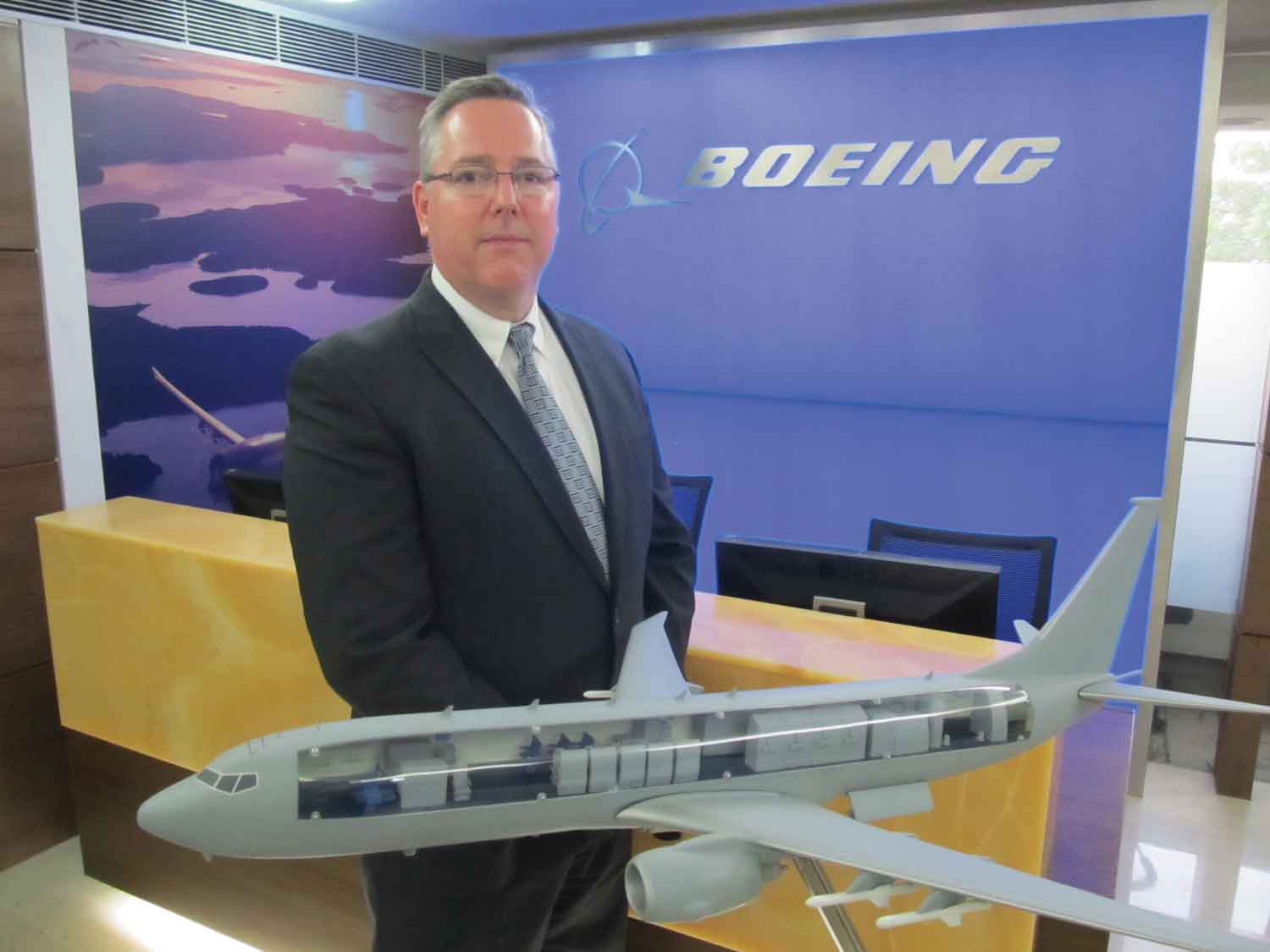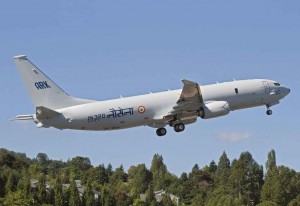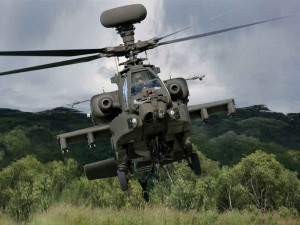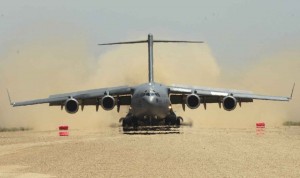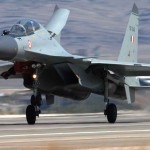“Boeing is committed to… meet the Indian government’s goals
to strengthen indigenous aerospace and defence capabilities”
The military industrial complex in the USA is in private hands but there is government control over export of defence-related equipment. To what extent does this impinge on the commercial objectives of the industry?
Boeing always complies with US and non-US trade regulations to maximise our global business interests and opportunities. And, we continue to partner with government officials and customers around the world to shape trade policies that will continue to allow Boeing and others in the defence and aerospace industry to meet those responsibilities while also responding to and competing in an ever-evolving global economy.
India’s defence requirements represent a significant opportunity for Boeing over the next 10 years.
What is your long-term business strategy in India?
India is a very important market for Boeing. India’s defence requirements represent a significant opportunity for Boeing over the next 10 years.
Our rich portfolio of products and services, tailored to India’s unique needs, includes the P-8I multi-mission maritime patrol aircraft, C-17 Globemaster III strategic lift airlifter, the heavy lift CH-47F Chinook helicopter, the combat-proven AH-64D Apache attack helicopter and weapons.
Boeing’s portfolio also extends to unmanned systems, security solutions, airborne early warning and control systems, services and support and network-centric operations systems.
Our long-term business strategy is to work closely with our customers on their defence and security requirements, execute flawlessly on our current campaigns and deepen our presence in the country through long-term and strategy partnerships.
Any major arms contract with India involves 30 to 50 per cent mandatory offset obligations. Has BDS made any assessment of the real capacity of the Indian industry to absorb such volumes of high technology workload?
Boeing has an unmatched reputation for delivering world-class industrial partnership programmes. We have brought benefits valued at more than US $42 billion to nearly 40 countries over the past 30 years.
Boeing has an unmatched reputation for delivering world-class industrial partnership programmes.
India has a large and growing defence aerospace market that will eventually sustain many Indian jobs and help to create and advance numerous technologies.
Boeing is committed to delivering offset programs to India that are in line with India’s Defence Procurement Policies and that meet the Indian government’s goals to strengthen indigenous aerospace and defence capabilities, enhance its self-reliance and national security, and position Indian industry for growth in the global market.
What is the current situation with regard to the proposal for acquisition of the Apache AH-64D Attack Helicopter and the Chinook heavy lift helicopters for the Indian Armed Forces?
Both the AH-64 Apache and CH-47 Chinook are in competitions initiated by the Indian Air Force.
If selected in the attack helicopter competition, India will receive the Apache Block III that the US Army took delivery of in November 2011 and has the latest technology insertions that make it a lethal attack helicopter. The AH-64 Apache is the only available combat helicopter with a spectrum of capabilities for virtually any mission requirement. It is uniquely suited to meet the customer’s needs – including reconnaissance, security, peacekeeping operations, and lethal attack – in both land and littoral environments – all without reconfiguration.
The CH-47 Chinook is also an ideal choice for India given its unsurpassed ability to deliver heavy payloads to high altitudes, and is eminently suitable for operations in the high Himalayas. The aircraft has state-of-the-art cockpit design, communications sub-systems, and drive train. It is extremely reliable, and offers lower Life Cycle Costing than any competitors in its weight category. In addition to its direct military capabilities, Chinook has developed a world-wide reputation as the helicopter of choice for humanitarian disaster-relief operations, in missions such as transportation of relief supplies, mass evacuation of refugees, and infrastructure repair and reconstruction.
What are the technical features and operational attributes that make the C-17 Globemaster III unique amongst other similar military transport aircraft in the world? What is the timeframe for delivery of the ten C17 Globemaster III for the IAF?
The C-17 is the world’s premier heavy-lift aircraft and has proven itself as a versatile strategic and theatre airlifter in every recent worldwide operation. The C-17’s ability to transport large payloads across vast ranges, land on short, austere runways, and operate in extremely hot and cold climates makes it ideal for the region.
The C-17 has proven highly reliable in the harsh environments of Iraq and Afghanistan. With a payload of 164,900 lbs. (74,797 kg), the C-17’s ability to fly long distances and land in remote airfields in rough, land-locked regions make it a premier transporter for military, humanitarian and peacekeeping missions. It can:
- Take off from a 7,600-ft. airfield, carry a payload of 164,900 lbs. (74,797 kg), fly 2,400 nautical miles, refuel while in flight and land in 3,000 ft. or less on a small unpaved or paved airfield in day or night.
- Carry a cargo of wheeled US Army vehicles in two side-by-side rows, including the US Army’s main battle tank, the M-1. Three Bradley infantry fighting vehicles comprise one load.
- Drop a single 60,000-lb. payload, with sequential load drops of 110,000 lb.
- Back up a two per cent slope.
- Seat 54 on the sidewall and 48 in the centerline.
The C-17 is a strategic airlifter that can fly intercontinental with a full payload at a range of 2,400 nautical miles. With aerial refueling, the C-17 can travel anywhere in the world, non-stop. The C-17 is the workhorse of the US Air Force fleet flying more than 2 million hours and at significantly higher rates of use than expected.
The CH-47 Chinook is also an ideal choice for India given its unsurpassed ability to deliver heavy payloads to high altitudes…
The C-17 meets India’s key airlift requirements, including:
- Advanced strategic and tactical capabilities that far exceed other airlifters
- Disaster relief and humanitarian relief/ evacuation/ air ambulance
- Aid to civil authorities
- Movement of field ambulance and emergency relief equipment
- Transportation of troops and heavy equipment including artillery, helicopters, trucks and tracked vehicles
- Payload and personnel delivery to high altitude regions
- Hot and high altitude air drops
- Paratroop capabilities
- Movement/ logistic support for movement of armed forces and their equipment
- Movement of large para-military in contingencies
- Large payload delivery into austere and semi-prepared environments
The C-17s will be delivered to India in 2013 and 2014.
…approach provides virtual fleet participants a pool of C-17 unique spares and support that ensures excellent operational availability and maintainability and results in significant cost savings.
What are your plans to set up MRO facilities in India?
At this time, we cannot comment on any specific plans to establish a military Maintenance, Repair & Overhaul (MRO) facility in India. However, we continually evaluate the need to augment existing capabilities, and expand long-term opportunities across our key markets. Boeing has proven experience in delivering affordable, reliable logistics, sustainment and MRO solutions to maximise global readiness for its customers.
Could you briefly explain the concept of ‘Performance-Based Logistic Support’ that the OEM offers with the C-17 to the USAF? Would such an offer be available for India too along with the fleet of ten aircraft that are proposed to be acquired for the IAF?
The C-17 Globemaster III Integrated Sustainment Programme (GISP) “virtual fleet” arrangement ensures mission readiness by providing all C-17 customers, with varied fleet sizes, the benefit of access to an extensive support network for worldwide parts availability and economies of scale when purchasing materials. C-17 GISP is designed around the Performance-Based Logistics concept. Under the arrangement, Boeing is responsible for integrating all C-17 sustainment activities, including material management and depot maintenance support. This approach provides virtual fleet participants a pool of C-17 unique spares and support that ensures excellent operational availability and maintainability and results in significant cost savings.




